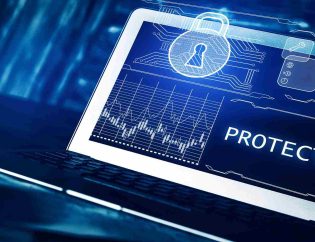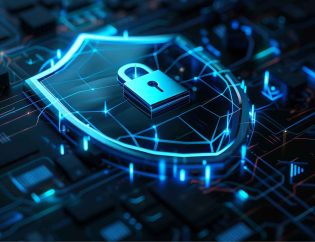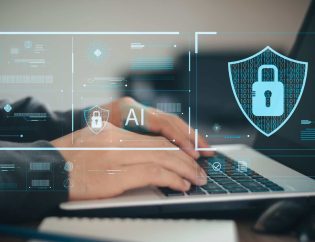
Introduction
In today’s digital age, IT endpoint security is essential for organizations seeking to protect their data and network integrity. With various devices—such as computers, mobile phones and tablets—used daily in business operations, each device, or “endpoint,” presents a potential vulnerability. This article discusses why IT endpoint security is critical, the common issues related to endpoint security and how endpoint management can help protect sensitive data across multiple devices.
IT endpoint security is essential for modern businesses, protecting devices from cyber threats and securing sensitive data. Safeguard your network by ensuring every endpoint is monitored and secure. #CyberSecurity #EndpointProtection
— Hyper Secure (@HyperSecure) November 9, 2024
What is IT Endpoint Security?
IT endpoint security refers to the strategies and tools used to protect end-user devices within a network from cyber threats. Endpoints, including laptops, mobile devices
and servers, serve as entry points for potential threats, making them critical to secure. IT endpoint security solutions provide protection against unauthorized access, malware, ransomware and data theft, ensuring the safety of sensitive information.
Endpoint security involves monitoring, managing and securing each endpoint to create a robust, resilient digital environment. This proactive approach reduces the risk of data breaches and helps companies maintain compliance with cybersecurity regulations.
Common Endpoint IT Security Issues
Endpoint IT security issues arise due to various vulnerabilities at the endpoint level. These vulnerabilities are commonly exploited by cybercriminals, targeting weak spots in the network. Common endpoint IT security issues include:
Phishing Attacks:
Phishing is a common tactic where cybercriminals send fraudulent emails to trick users into revealing sensitive information, such as login credentials.
Malware Infections:
Malicious software, or malware, infects endpoints, compromising data and potentially spreading to other parts of the network.
Weak Passwords:
Insecure passwords allow unauthorized users to gain access to sensitive data and resources, increasing the risk of security breaches.
Key Security Challenges:
Lack of User Awareness:
Employees may unknowingly engage in unsafe practices, such as clicking on suspicious links.
Frequent Software Vulnerabilities:
Outdated software is vulnerable to exploits, making it essential to update applications and operating systems regularly.
Inconsistent Security Policies:
Security policies may vary across devices, leaving some endpoints less protected.
Addressing these endpoint IT security issues requires a robust security solution that monitors, detects and responds to threats in real time.
How Endpoint Security Prevents Data Theft
Data theft is one of the most significant concerns for businesses today and endpoint security plays a vital role in preventing it. Endpoint security uses various techniques to prevent unauthorized access to sensitive information and protect data integrity.
Key Features to Prevent Data Theft:
Encryption:
Encrypting data ensures that only authorized users can access it. Encrypted data is unreadable without a decryption key, making it secure from unauthorized access.
Access Control:
Access control measures ensure that only certain users have access to specific data. This minimizes the chances of data breaches by limiting the number of people who can access sensitive information.
Behavior Monitoring:
Monitoring endpoint behavior allows organizations to detect unusual activities that may indicate a potential breach, enabling quick response and containment.
These strategies are essential for securing sensitive data, particularly in organizations handling confidential customer or client information.
Data Theft Prevention Features:
Multi-Factor Authentication:
Adds an extra layer of security by requiring two or more forms of verification.
Automated Threat Detection:
Detects potential threats in real time, preventing unauthorized access before it occurs.
Regular Security Updates:
Ensures that endpoints are protected against the latest threats, addressing vulnerabilities before they are exploited.
With these features, endpoint security creates a strong line of defense against data theft.
Understanding Endpoint Terminology in IT
Understanding endpoint IT terminology is essential for creating and managing an effective endpoint security strategy. Familiarizing yourself with key terms can help you communicate more effectively with IT professionals and better understand your security needs.
Endpoints in IT:
Endpoints are devices, such as laptops, smartphones and servers, that connect to an organization’s network and act as points of entry.
IT Endpoint Management:
This is the process of monitoring and managing all endpoints to ensure they comply with security policies, remain updated and stay protected.
Zero Trust:
Zero trust is a security model that operates on the principle that no device or user should be trusted by default, even if they’re within the network. It requires verification for every access request.
Understanding endpoint in IT terminology enables organizations to identify their specific security needs and develop effective policies.
The Role of IT Endpoint Management
IT endpoint management involves overseeing all endpoint devices within an organization’s network to ensure that they adhere to security policies. Effective endpoint management is essential for protecting a network from potential security breaches. Key components of endpoint management include:
Device Monitoring:
IT administrators monitor endpoint activities to identify suspicious behavior and address threats quickly.
Policy Enforcement:
Ensures that all devices comply with established security policies, reducing the risk of vulnerabilities.
Patch Management:
Keeping devices up to date by applying security patches to close potential gaps that could be exploited by hackers.
With effective IT endpoint management, organizations can prevent unauthorized access and reduce the risk of cyberattacks. Endpoint management is an essential part of a strong cybersecurity strategy, providing centralized control and visibility across all connected devices.
Customer Testimonial
“Hyper Secure’s endpoint security solutions have completely transformed our security framework. We now have centralized control, real-time monitoring and the peace of mind that our data is protected across all endpoints.”
Key Features of Endpoint Security Solutions and Their Benefits
| Feature | Description | Benefit |
|---|---|---|
| Encryption | Secures data by converting it into an unreadable format | Prevents unauthorized data access |
| Access Control | Limits data access to authorized users only | Reduces data theft risks |
| Behavior Monitoring | Tracks user and device behavior for anomalies | Enables early threat detection |
| Multi-Factor Authentication | Requires multiple forms of identification | Strengthens endpoint access security |
Conclusion: How Hyper Secure Can Help
Hyper Secure, a leading Endpoint Security Company, provides trusted IT endpoint security solutions with a comprehensive approach to safeguard your organization’s data. Our advanced security features, including encryption, multi-factor authentication and continuous monitoring, protect endpoints from evolving threats. Let Hyper Secure help you build a robust endpoint security framework, empowering your business to operate confidently and securely in today’s digital landscape.
FAQs
Q1: What is IT endpoint security?
A: IT endpoint security protects devices like computers, phones and tablets from cyber threats by monitoring and managing access points within a network.
Q2: What are common endpoint IT security issues?
A: Common issues include phishing attacks, malware infections and weak passwords that leave devices vulnerable to cyber threats.
Q3: How does endpoint security prevent data theft?
A: Endpoint security uses encryption, access control and behavior monitoring to protect sensitive data and prevent unauthorized access.
Q4: What is IT endpoint management?
A: IT endpoint management involves monitoring and controlling all endpoint devices to ensure they follow security policies and remain updated.
Q5: What are endpoints in IT?
A: Endpoints are devices, such as computers, mobile phones and tablets, that connect to a network and require security measures.








